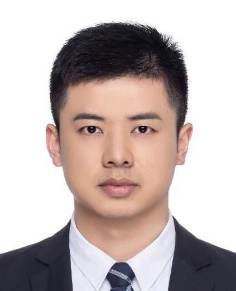Constructions, Mechanisms, and Applications of Self-Powered Electrochemical Humidity/Force Sensors
Time
19:00 PM, October 29, 2025 (Beijing Time, CST)Contact Us
Email: smdjournal@sciexplor.comSpeaker

Dr. Zaihua Duan
School of Optoelectronic Science and Engineering, University of Electronic Science and Technology of China (UESTC), Chengdu, China.
Dr. Zaihua Duan is an associate professor of UESTC. He received his PhD degree in optical engineering from UESTC in 2022. His research interests include sensing functional materials and their applications in gas, humidity, pressure and photoelectric sensors. So far, he has published over 100 SCI papers in Sens. Actors B, ACS Nano, Adv. Funct. Mater., Nano Energy (including 27 ESI Hot/Highly Cited Papers), with a personal Google Scholar total citation of over 8,600 times and an H-index of 57. He was selected as a “Highly Cited Scholar” by Scilit in 2023 and 2024, as well as the “World’s Top 2% Scientists” released by Stanford University in 2022-2025.
Host

Dr. Feng Jiang
School of Materials Science and Engineering, Nanyang Technological University, Singapore, Singapore.
Dr. Feng Jiang obtained his Ph.D. in January 2025 from Nanyang Technological University under the supervision of Professor Lee Pooi See (Vice President of NTU and Fellow of the National Academy of Inventors, USA). After graduation, he continued to work in the same group as a postdoctoral research fellow. His research focuses on flexible electronics, intelligent sensing, functional composites and human-machine interface technologies. To date, he has published more than 20 peer-reviewed papers and one book chapter, with over 1,400 total citations and an H-index of 17. His research achievements have been highlighted by Nature Reviews Materials and Nature Catalysis, and have been featured by international media including the NTU official website, Tech Xplore (USA), News Update (UK), and Channel NewsAsia (CNA, Singapore).
Programme
In recent years, various self-powered sensors with voltage/current output characteristics have received widespread attention due to their zero-power advantage and potential for developing self-powered sensing systems. Unlike the widely reported self-powered sensors based on piezoelectric, triboelectric, photoelectric, and thermoelectric effects, this talk introduces several self-powered humidity/force sensors based on electrochemical reactions from construction methods, working mechanisms, and physiological sign detection applications. (1) A high-performance electrochemical humidity sensor with electrode coplanar structure was developed based on KCl/carbon black/halloysite nanotubes humidity sensing materials. The humidity sensing/power generation characteristics of the sensor were tested, and the working mechanism was revealed based on experimental evidence. In addition, its various applications have been validated. (2) A sandwich structured paper-based self-powered electrochemical pressure sensor was proposed, and the sensor’s pressure sensing/power generation characteristics were tested. The pressure sensing and power generation mechanisms of sensor were investigated, and its applications in respiratory rate and motion detections were verified. (3) A self-powered electrochemical strain sensor based on flexible core elastic wire structure was designed and constructed, and its strain and power generation performances, as well as working mechanism, were studied. These works are expected to provide guidance for the development of new self-powered humidity, pressure, and strain sensors.Presentation
Presentation
21



